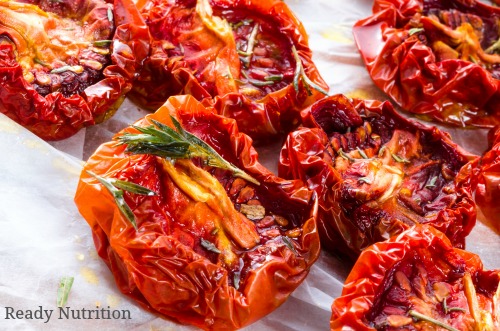
There are as many types of dehydrators as there are words on this page. The most important thing you can do with your dehydrator (besides ensuring that it works) is to put it to work. A dehydrator packed in the box with its instructions, safe on your shelf is not doing you any good. In addition to this, there are a ton of plans for solar dehydrators all over the internet, and articles have been written about solar dehydrating in the past.
One of the rules of dehydrating and perhaps one of the biggest mistakes that people make is that they do not boil/parboil their vegetables before placing them in the dehydrator. This accomplishes several things. By parboiling the food, it makes it easier for the dehydrator to extract the fluid from it. The act of immersion in the boiling water for a couple of minutes also kills any bugs that may have slipped through, and any damaging fungus or exterior plant woes.
If you have a standard, 4-tray dehydrator, you can rock and roll with that thing for about 8 hours and dry your veggies out just fine. Another thing you may want to consider is that when you dehydrate fruits and vegetables there is some nutrient loss, especially vitamin C, but it can easily be added back. Now, there are plenty of packets out there for canners, and if you want the “Uncle Caveman” method, here it is. Take a couple of thousand milligrams of Vitamin C tablets, and crush them up into a fine powder. Yes, the mortar and pestle made from marble are excellent for this. A hammer with a clean striking face will suffice as a backup.
After powdering your Vitamin C very fine, then take a good-sized bowl (glass, such as Pyrex is best, as you can see the mixture occurring and it will not trap any Vitamin C on the surface) and fill it halfway with water at room temperature. Mix in the powdered Vitamin C. Soak the vegetables to be dried for about 1-hour minimum in the refrigerator. This will allow the C to soak into the tissues of and adhere to the surface of the veggies. The Vitamin C (being an acid, hence the name ascorbic acid) will keep mold from growing on your stored veggies, as the acidity is not something that fungus and/or “bugs” prefer to live in.
Some high-acidity foods such as tomatoes don’t really need this, as well as other fruits. Even so, I still do it with apples; better safe than sorry. Parboiling also helps with things such as berries, as unless the outer skin of the berry is loosened slightly by the boiling, the dehydrator will have a really hard time. Make sure you use Vitamin C on these as well! I lost a whole “crop” of serviceberries because of mold; therefore, ever since I have used the Vitamin C “bath” on everything.
It would behoove you to put preps of dried veggies into overdrive, and then maybe branch out to other things such as fruits, meats, and other staples. You cannot overprepare, and eventually, you would have to can them all anyway if you did not give away your extra. Keep in that good fight! JJ out!
This article was originally published at Ready Nutrition™ on August 9th, 2017






